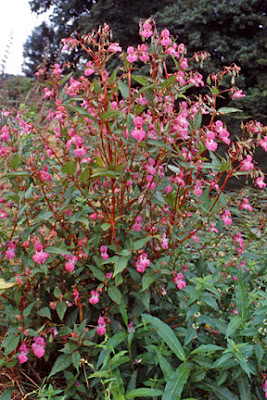Whether it involves the use of chemical treatment, physically
uprooting plants, or introducing biological controls, there are numbers
projects in place to remove invasive species e.g.1, 2, 3. However, invasives are persistent
and removal is expensive (Pimentel et al., 2000) so should
not be done light heartedly. I
found it particularly interesting that removing invasives may also have unexpected ecosystem
wide effects (Zavaleta et al., 2001).
Macquarie Island is a natural heritage site, home to a variety
of native plant species and seabird colonies. The story of what happened on
this Island describes what can wrong if conservationists do not consider
ecosystem processes and food web structure before removing invasive species…
Cats were unfortunately introduced to the island in the
early 1800’s and rabbits were later introduced by sealing gangs in 1878. When
the rabbits arrived they were preyed on by the cats and populations were kept
at equilibrium. Despite this the population size was still large enough that rabbit grazing
activity had an extremely negative impact on the vegetation. As a result the
European Rabbit Flea was introduced to the island to further reduce the
rabbit population and protect the native vegetation. The flea was
effective and the population size decreased. However, the conservationists did not
consider the implications that this would have on the cats, which developed an
appetite for seabirds in the absence of rabbits! In response to this the cats
were shot on the island, which obviously lead to an increase in rabbits! (Bergstrom et al., 2009)
This is not the only case where eradication has been hard. The Giant African Snail recently featured on BBC News for this exact reason.
This is not the only case where eradication has been hard. The Giant African Snail recently featured on BBC News for this exact reason.
For those of you against invasives it therefore seems that prevention
is more beneficial than eradication. Methods of preventing invasives can be
read about here, and interestingly investment in prevention could save money in the long term (Leung et al., 2002)
This adds to the debate of whether or not we should allow
invasive species that are moving north as a consequence of human induced climate
change to establish or not. After all, invasive species can have a positive effect on the environment, but if we don't prevent them will it be too late to find out?
In the new year I’ll be posting my opinion on invasive
species and climate change – in the mean time have a fabulous time celebrating the start of 2014!
Elena












.jpg)




